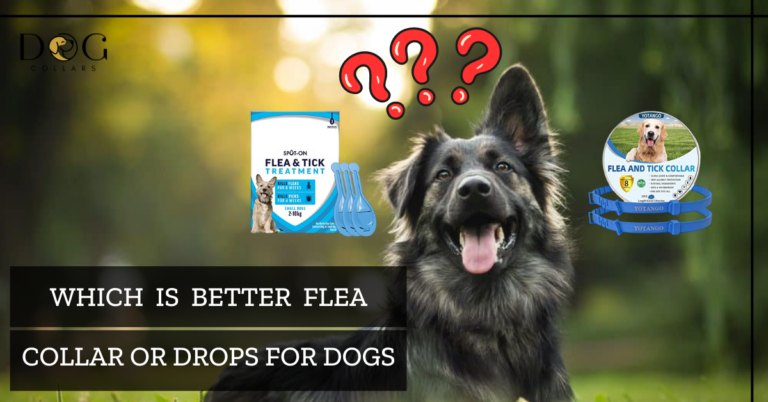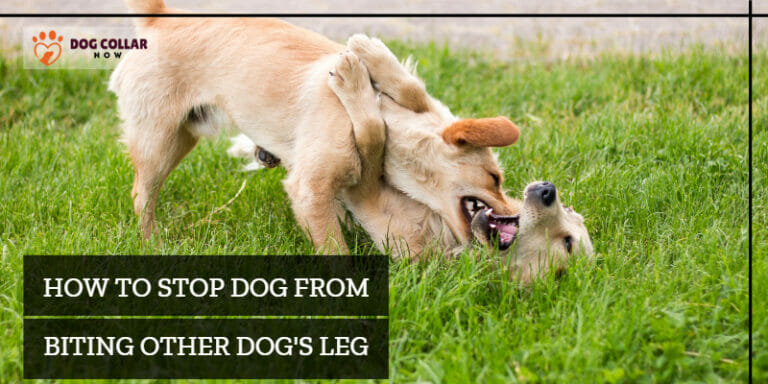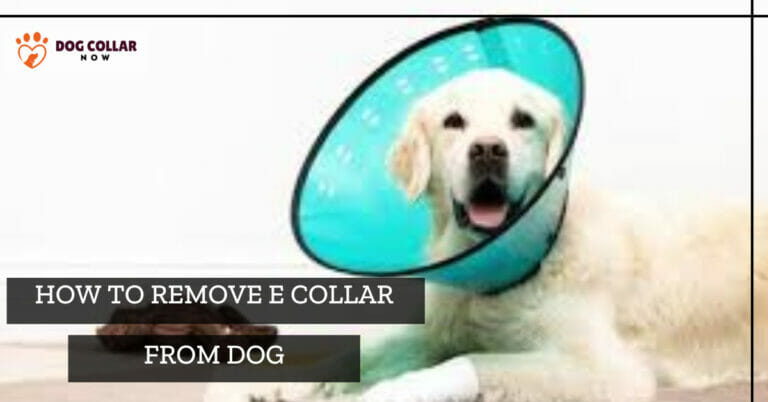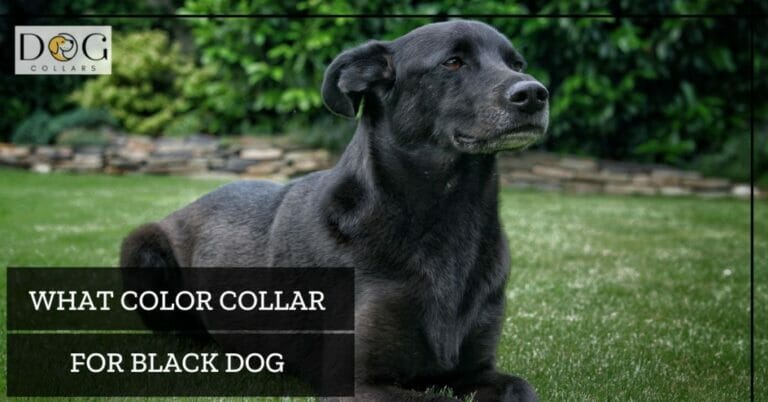Collar vs Harness for Small Dogs – Choosing the Perfect Gear

Are you a proud owner of a cute little puppy? and you are struggling to decide between a collar and a harness for a small dog? Well, you’re not alone! This is a common dilemma among pet owners, especially those who are new to owning a furry friend.
The main difference between a collar and a harness for small dogs depends on their behavior and specific needs. Collars are suitable for well-behaved dogs, while harnesses provide better control and safety for those who pull or have respiratory issues. Consider your small dog’s behavior to make the right choice.
Now, we will discuss the factors you should consider for collar vs harness for small dogs before you decide. So sit back, relax, and get ready to make an informed decision about what’s best for your pup!
Collar vs Harness for Small Dogs – What’s the Difference
Small dogs are incredibly adorable and make great companions. When it comes to taking them out for a walk, many pet owners find themselves wondering whether they should use harnesses and collars While both options have their benefits and drawbacks, we will discuss a few differences here,
Collars:
- A traditional choice for walking dogs.
- Fits around the dog’s neck and attaches to a leash.
- Can be made of various materials such as leather, nylon, or chain links.
- Lightweight and easy to put on/off.
- May not provide enough control over your dog during walks.
- Suitable for dogs who are well-behaved and don’t pull on the leash.
- Not recommended for dogs with delicate necks or respiratory issues.
Harnesses:
- Fits around your dog’s chest/body with straps that go under their legs.
- Offers more support and control than collars.
- Distributes weight evenly across the body.
- Ideal for small dogs with delicate necks or breathing issues (e.g., Pugs or French Bulldogs).
- Provides better control over your dog’s movements.
- Helps prevent choking or neck injuries.
- May take some time for your dog to get used to wearing a harness.
Whether you choose a collar vs harness will depend on what type of control you need over your pup when walking them outside while keeping their health condition in mind too!
Pros and Cons of Dog Collars
Dog collars are one of the most common accessories for dogs. They come in a variety of materials, sizes, and styles to suit different breeds and dog owners’ preferences.
| Pros | Cons |
| 1. Identification: A collar can hold ID tags, which can help ensure your dog is returned to you if it gets lost. | 1. Neck Injuries: A collar can potentially cause neck injuries, especially in small dogs. If a small dog pulls hard on the leash, it may harm its throat or neck. |
| 2. Training: Collars can be effective for leash training and teaching your small dog how to walk properly. | 2. Tracheal Collapse Risk: Small dogs are more susceptible to conditions such as a collapsed trachea, which can be exacerbated by pressure from a collar. |
| 3. Control: Collars provide a means of controlling your dog, which can be important for safety. | 3. Potential for Getting Stuck: Collars can get caught on things, potentially posing a strangulation hazard. |
| 4. Accessibility: Dog collars are readily available in a variety of styles, materials, and sizes. | 4. Escape: Some small dogs are adept at slipping out of their collars, which could lead to them getting lost. |
| 5. Cost-Effective: If you’re looking for a more affordable option, you might opt to use a collar for your dog over a harness. | 5. Uncomfortable: New dogs find collars uncomfortable, especially if they’re not used to wearing them. |
Remember, the appropriateness of a collar depends largely on the individual dog’s temperament, size, health condition, and the owner’s ability to train and control their pet. Always ensure that a collar is properly fitted and used correctly to minimize potential risks.
It’s also recommended to consult with a veterinarian or a professional dog trainer to understand which is comfortable for your dog.
Types Of Collars For Small Dogs
When it comes to dog collars, there are different types of collars available. Choosing the right collar for your furry friend can make all the difference in their comfort and safety.
1. Martingale Collar: Limited-slip collar designed for dogs that can slip out of traditional collars.
2. Head Collar: Resembles a horse’s halter and gives control over the dog’s head for training.
3. Prong or Pinch Collar: This contains metal prongs that press into a dog’s neck for training, are controversial and require professional guidance.
4. Shock Collar: Emits a shock, vibration, or noise to correct behavior, is controversial, and requires professional supervision.
5. GPS Collar: This uses satellite technology to track a dog’s location, useful if your dog gets lost.
6. Reflective or Lighted Collar: Features reflective or lighted elements for safety during nighttime walks.
Choosing a suitable type of dog collar depends on your dog’s needs and behavior as well as what works best for your dog during walks or other activities together.
The Pros and Cons of Dog Harnesses
Sure, here is a table highlighting the pros and cons of dog harnesses for small dogs.
| Pros | Cons |
| 1. Better Control: Harnesses provide more control over your dog, also used for dog training, which can be especially helpful with small, energetic dog breeds. | 1. Difficult to Put On: Some harnesses can be complicated to put on, especially if the dog is not cooperative. |
| 2. Less Risk of Injury: A harness distributes pressure over a larger area of the dog’s body, reducing the risk of injury to the throat and neck. | 2. Can be Uncomfortable: Some dogs find harnesses uncomfortable or restrictive, particularly if they’re not used to wearing them. |
| 3. Discourages Pulling: Harnesses are excellent for training small dogs not to pull on the leash, as they do not reward the dog for pulling. | 3. May Not Prevent Jumping: Harnesses might not be as effective in controlling and discouraging jumping behavior in excitable dogs. |
| 4. Good for Dogs with Medical Conditions: Generally a safer option for dogs with medical conditions like a collapsed trachea, use a harness. | 4. Need for Proper Fit: Harnesses need to be the correct size and properly adjusted to prevent discomfort or the chance of the dog wriggling out. |
| 5. Visibility and Safety: Many harnesses come with reflective strips, which can improve the visibility of your small dog. | 5. More Expensive: Generally, harnesses are more expensive than collars. |
Remember, as a responsible dog owner, not all small dogs will have the same reaction to a harness, so it may take some trial and error to find the best option for your pet. Consider factors like breed size and temperament before making your decision.
Types Of Small Dog Harness
When it comes to small dog harnesses, there are different types available in the market. The type of harness you choose for your furry friend will depend on their individual needs and preferences.
1. Back-Clip Harness: The leash attaches to the dog’s back, reducing throat pressure.
2. Front-Clip Harness: The leash attaches to the dog’s chest, providing better directional control.
3. Dual-Clip Harness: Offers both front and back leash attachments for flexibility.
4. Step-In Harness: The dog steps into it with its front legs, avoiding the need to maneuver over the head.
5. Vest Harness: Provides more coverage for comfort and warmth while distributing pressure.
6. No-Pull Harness: Applies gentle pressure to armpits to discourage pulling.
Ultimately, choosing a small dog harness depends on what works best for both you and your furry companion during walks or any other activity that requires them to be harnessed up!
What To Consider When Buying A dog Collar Or dog Harness?
When it comes to buying a collar or harness for your small dog, there are several factors you should consider.
Breed and size:
Think about your dog’s breed and size. Some breeds require specific training tools that cater to their unique body shapes and sizes.
Purpose:
Next, consider the purpose of the collar or a harness. Is it purely for identification purposes? Or do you need something that will give you better control over your dog during walks? If your dog pulls on the leash, then a front-clip harness may be a better option than a traditional flat collar.
Health Condition:
Another factor to keep in mind is whether your dog has any existing health conditions. For example, choke collars can be harmful to dogs with respiratory issues. In such cases, using a good-quality harness may be more suitable.
Comfort and safety:
Think about the overall comfort and safety of your pet when choosing between a choker or harness. A well-fitting and comfortable harness can provide greater support while minimizing strain on their necks during training sessions.
By considering these factors carefully before making your purchase decision, you can ensure that both you and your furry friend have an enjoyable experience walking together!
Harness vs Collar: Which One Is Best for Your Puppy?
The best dog collar for your puppy depends upon personal preferences. Deciding between a collar and harness for a puppy depends on their breed, size, and behavior. Collars suit well-behaved puppies who don’t pull, while harnesses are better for puppies that pull or are in training, distributing pressure evenly and reducing injury risk. Both require proper fitting, and it’s advised to consult a professional to ensure the correct type and size are chosen for your puppy.
Conclusion
In conclusion, both collars and harnesses have their pros and cons, and the best choice will depend on your small dog or puppy’s breed, size, behavior, and any health conditions they may have. Traditional collars can be suitable for well-behaved dogs and provide a place for identification tags but may pose risks if the dog pulls on the leash.
Harnesses, on the other hand, offer more control and evenly distribute pressure, reducing the risk of injury, but might be more challenging to put on and potentially more expensive. The key to choosing between a harness or collar for your small dog or puppy lies in understanding their unique needs and seeking professional advice to ensure proper fitting and use.
FAQs:
Are harnesses better for small dogs?
Yes, harnesses are generally better for small dogs due to improved control and reduced injury risk. Individual dog needs may vary.
Is it important to select the right size harness?
Absolutely, the right size harness ensures comfort and prevents escape.
Is it better to run with a dog in a harness or collar?
Running with a dog is generally safer using a harness, as it provides better control and reduces strain on the neck.
Should dogs wear collars all the time?
No, dogs should not wear collars all the time. Prolonged collar use can cause skin irritation. It’s best to remove it when the dog is in a safe, enclosed space, like home.
What is the risk of using a harness?
The risk of using a harness is minimal when properly fitted and used. However, an ill-fitting or improperly used harness may cause discomfort, chafing, or restrict movement. Regular monitoring and adjustment can help mitigate any potential risks.








